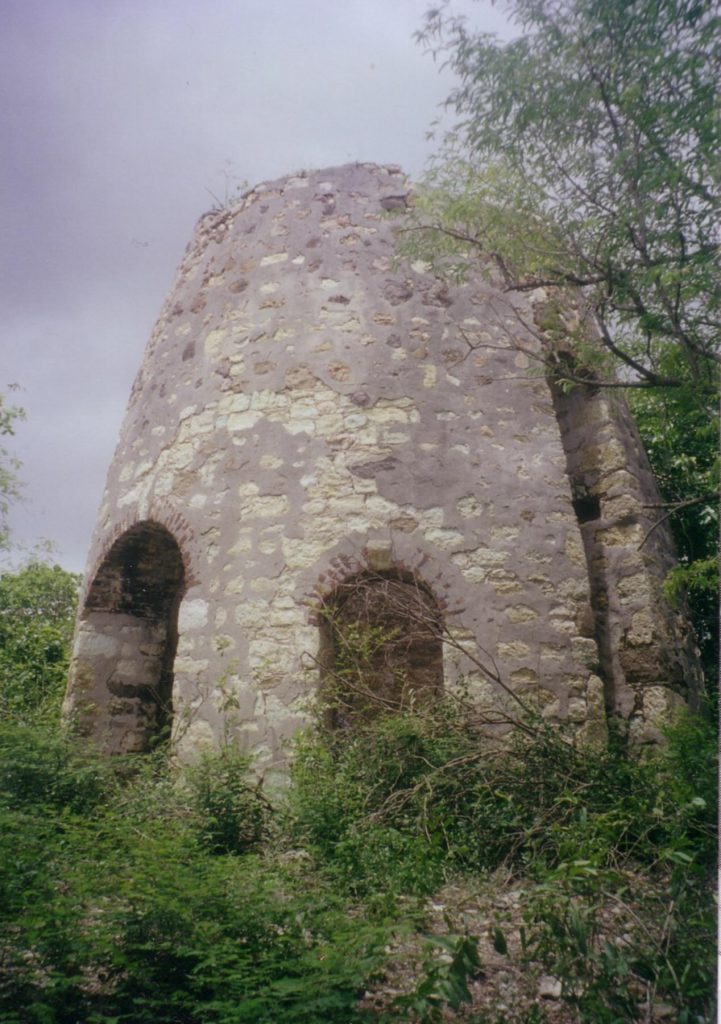About
Type: Extant
Parish: St.John
Founding date: 1713
See on Google Maps!

Current Status
The sugar mill on this plantation is in very good condition and features an unusual squat barrel shape, much different from any other sugar mill on the island. This mill was never converted to steam.
Estate Related History/Timeline
The original house was changed slightly by Dr. Raeburn and his wife in the 1930s when they used many of the old burial stones on the property as fill when they built the new stairs to the entrance. Rita Raeburn, the doctor’s daughter, has said there was a slave burial ground marked by a copse of large old tamarind trees. One marker remained when she last looked. The estate has a beautiful view of Bendal’s Estate (#37) and McNish Mountain, together with the Allen’s (#48) and Gillead/Providence/Mills (#189).
When known as the Body, this plantation was rented for £900 annually and occasionally “underlet” for £120 per year.
With the abolition of slavery in 1833, the British Parliament granted the St. Clare estate a Legacy award (Antigua 115) of £10,041. 6s. 9p. for granting freedom to 62 enslaved. Rowland Edward Williams was the sole awardee.
Both Vere Oliver and the 1872 edition of the Horseford Almanac show St. Clare, owned by “The Honorable James B. Thibou, a member of the Assembly for St. John’s City”. The estate had 354 acres, with an additional 10 acres owned by William Alsas. However, the Ownership Chronology above lists the owner in 1872 to be Dr. Jesse W. Thibou!
Dr. Robert Raeburn was the chief Government veterinarian on the island during the 1940s and, along with Robert Hall at Smith’s (#161), established a dairy farm. Their gardens were beautiful and very extensive, with a large variety of trees and plants, including an ancient, large Sandbox tree that still stands just west of the original house. Peacocks continue to roam the grounds.
Above one of the outbuildings is a plaque that reads: “St. Clare, formerly known as The Body Plantation of Colonel Roland Williams and his heirs from 1680-1842. Surveyed by Edward St. Clare in 1772.” had large bells like this, which were used to summon the workers. The estate had an 18-inch bell forged by Mears & Staenbank Founders, London, in 1860. Although new and cracked, it still lies in the yard. Most of the plantations had large bells such as this, which were used to summon the workers on the estates.
The Raeburn family also possessed a lovely map of the estate drawn by Alexander Willock, Esq. It shows the complete layout with numbered fields, acreage, roads, and the location of the sugar mill and buildings. John Killean was the surveyor.
Enslaved People’s History
Based on contemporary research, we have little information to share about the enslaved peoples from this plantation at this time. Rita Raeburn, the doctor’s daughter, has said there was a slave burial ground marked by a copse of large old tamarind trees. One marker remained when she last looked. With the abolition of slavery in 1833, the British Parliament granted the St. Clare estate a Legacy award (Antigua 115) of £10,041. 6s. 9p. for granting freedom to 62 enslaved. We will continue our quest for more information about these vital individuals.
Ownership Chronology
1713: Edward St. Clare 320 acres.
1750: Edward Williams
1790: Samuel Williams
1829: Roland Williams 384 acres.
1872: Dr. Jesse W. Thibou
1891: Louisa Martin
1921: W. T. Malone
1933: Dr. Robert Andrew Raeburn d. 1987
1980: Raymond Raeburn and his wife, Ursula
2003: Heirs of the Raeburn’s